Browse even more fantastic examples of landscape concepts and environmental art by visiting Behance - the world’s largest network for showcasing creative work.
Environmental Concept Art & Design.
If you’re looking to learn all about environment concept art, you’ve come to the right place. Find your way across digital vistas and breath-taking landscapes with our comprehensive companion to creating concept scenery and landscapes. Find inspiration, tips and tricks to bring imaginary worlds to life, whether you’re a scene-building novice, a hobbyist searching for inspiration or an experienced pro wanting to re-hone your skills.
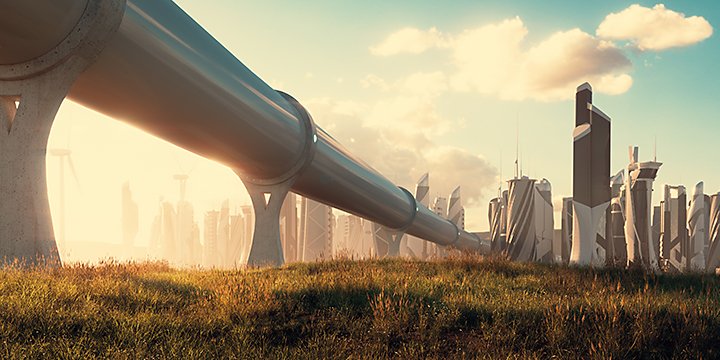
What is environment concept art?
Environmental concept art is all about visualising indoor and outdoor spaces at the early design stage of most forms of visual media - from animation to video games. Concept landscapes bring initial life to creative worlds by conjuring vivid scenes in which the film, game or TV show will take place.
An environment concept artist will consider the style, aesthetic, size, setting and key points of interest (POIs) of the intended world as the first step in visualising it for the screen. From natural landscapes like mountains and forests, to utterly alien architecture or classy historic-inspired interiors; the only limit is the concept artist’s imagination!
Why do we need concept landscapes and environments?
Concept art landscapes and environments - alongside art for characters, costumes and props - helps production designers, producers and directors with:
- Mood and style - visualising environments that characters will inhabit or journey through can really ‘set the tone’ and help communicate to investors, fans or simply the wider production team what kind of atmosphere and setting the creation is going for.
- Reference material - by setting out where the story will take place in concept images, production and level designers are able to use this as the starting point to build out the vision that the creators have for their work.
- Plot points - from dramatic battles on rugged hillsides to emotional reunions in cosy homesteads, the location is a key aspect of many important moments in film, TV or video game plots. Being able to visualise these locations can help producers and actors better understand where scenes take place and how they will play out.
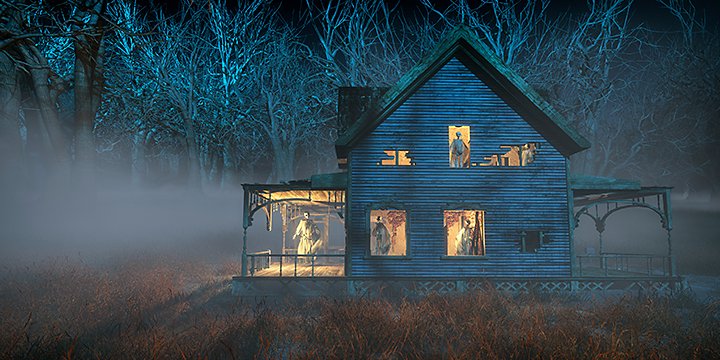
What makes a great environmental concept artist?
If you’re considering pursuing a career in concept art environments, these skills, interests and experiences could make you an ideal candidate:
- Fascination for landscapes, geography and cityscapes.
If you find yourself enthralled by night-time city views or natural vistas wherever you go, then applying your enthusiasm to concept art could be a terrific fit. - Passion for art, design and creativity.
You’ll be working with a range of art formats to create environmental digital art, so an understanding of form, colour, light, texture and how to work with them is essential. - An understanding of the laws of physics.
The environments you visualise need to function and react according to the rules of that world, so an understanding of the laws of physics is definitely helpful - both to obey them and convincingly break them! For example, does a waterfall need to obey gravity or does the world-building change that detail? How and why? Asking these questions can help to better realise worlds and elevate how they eventually come to life. - A love of collaboration.
You’ll typically be working with other concept artists as well as a wider team of designers, videographers and producers, so the ability to work as part of a team is a valuable skill. - Organisation.
Managing workloads, working to deadlines and keeping on top of documents, files and sketches is important for any environment concept artist. - Interest in visual media.
If you’re going to be creating worlds for film, animation or gaming, it makes sense that you should have an interest in these artforms. Whether you’re an amateur hobbyist or have a degree in Game Design or Film Studies, having a passion for the craft will stand you in good stead. - Skill with relevant software.
Understanding how to get the best from tools such as Adobe Illustrator will go a long way to helping you to pursue a career. Practice makes perfect, so don’t be afraid to experiment and build your portfolio.
How to draw environment concept art.
Our step-by-step guide will talk you through the basics.
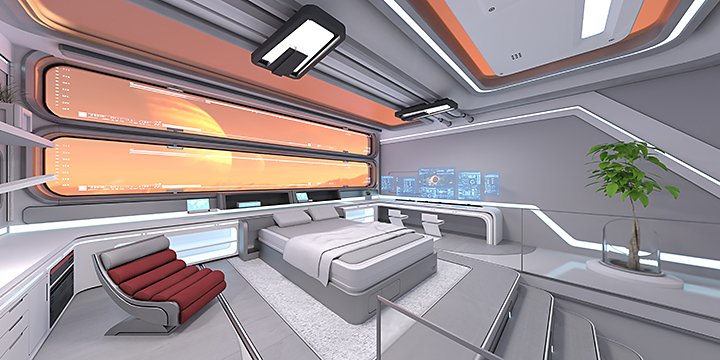
1. Find references for inspiration.
Environmental concept artists often find inspiration in their everyday surroundings, whether that be simple objects, scenery, photographs - or something else entirely. You might keep a bank of pictures of locations and items which you can draw a spark of an idea from, or you could browse the Internet to get a sense of how your imaginary environment could look and feel.
Behance, where other concept artists share their work, can be a great source of inspiration. Why not compile images into a mood board, which you can refer to while you draw?
2. Think about the ‘tone’ and genre you want to capture.
A historical romance will have a very different feel to a dystopian sci-fi. Consider how the environment can reflect the theme when deciding on a colour palette, scale and scenery.
Jagged mountains, steep cliffs and sharp jutting rocks can convey inhospitable and treacherous environments, while soft flowing grasses and rolling countryside feel much safer and more wholesome.
Light can also play an important part in conveying the tone when you’re first developing some simple environment concept art. Light adds depth and can help to draw attention to important elements within the image. Whether there’s a beam of light falling onto the characters as they walk or shimmering on a mysterious pool they’re facing towards, this will attract the attention of viewers and help them to understand what the focus of the scene is.
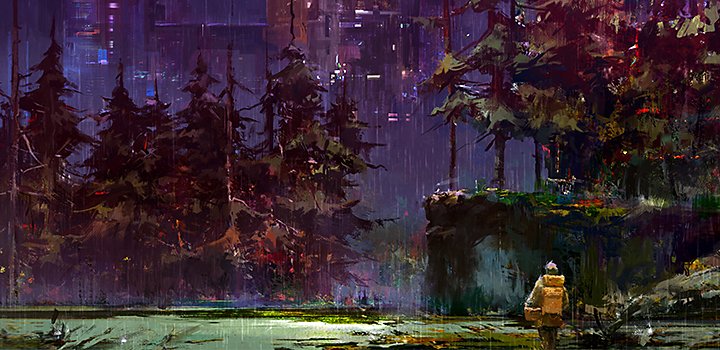
3. Match up colours with intent.
In environment concept art for video games in particular, colour and intent are often closely linked. Different visual assets are typically given distinct and easily distinguishable colours, so that players know what to look out for. Marrying objects with colours can therefore help you to choose your colour palette accordingly.
As in nature, for example, yellows, reds and oranges can be used to signify danger and could be used for hazards, while blues, greens and browns fade more easily into the background without disrupting the image. Ensure that the parts of the landscape that the players can interact with are distinct from the background sky or distant scenery, even at the concept stage.
This principle can be applied more widely too. For example, an environmental drawing for a film can use colour to highlight key objects, such as giving a crucial ‘MacGuffin’ a golden hue.
4. Consider the composition.
In environment concept art design, each still image needs to work hard to tell a story, so the aspect and perspective of each frame is important. Where do you want the viewer’s eye to be drawn? How can you convey the scale of the landscape? From whom’s perspective are we viewing the environment?
Think about including close-up elements as well as a far-away zone to create immediate interest and layers of detail. Ensure that important elements aren’t scattered around the edge of the image either, but focused to enhance the story instead. One great tip is to use the golden ratio to focus the viewer’s attention on the most important part of the image.
Design and create striking environmental concept art with Adobe Photoshop.

Step 1: Line sketch.
As simple as it may sound, the first step when beginning any concept art is getting something down on the page! Start with simple line work - using a grid reference to help with composition. Make sure that you align features of your sketch with grid lines to help focus your drawing.
Once the line sketch is down, build on it by blocking with colour and adding texture. If you’re working with a digital programme like Adobe Illustrator, you can easily layer, adjust and adapt your work as you go.
Step 2: Block out colour
Block out the overall colours of the image to fill the entire space. This can help you to define your colour palette and understand how to incorporate light. Define the sky, the horizon line, the background and the foreground, as well as deciding where the focal point of the image will be.
This video guide is a great example of how to colour block in the early stages of digital environment painting:
Remember to choose colours that reflect the environment, such as blues and greys for cold environments, yellow hues for hot, dry places and greens for forests or fields. Add depth and visual interest with varied colours and think about where the light source is coming from.
Is the sun high in the sky or casting long shadows? Or maybe it’s night-time, with fiery glows coming from campfires illuminating patches of dark around them. The possibilities are almost endless.
Step 3: Clipping masks.
The Clipping Masks feature in Adobe Photoshop allows you to paint into the shape of a layer while in a separate one, so you can keep working on different layers without affecting your work. This is a helpful feature if you want to experiment with colour and texture in the background or foreground, without affecting your blocked out landscape.
Create a new layer above the layer you want to paint into, right click the new layer and select ‘Create Clipping Mask’. You can work on adding colour, texture and depth to a specific area, as well as moving, stretching and adjusting it. Alternatively, delete it completely and trying again if you’re not happy! It’s easy to play around with different things.
Step 4: Add texture and rendering.
Now it’s time to build on your environmental concept art, fleshing out the visual interest and really bringing the image to life. Add texture to give the world you’ve created serious depth - whether that’s ripples on water, rough tree bark or undulating sand dunes.
Define shapes and add light and shadow to the foreground for added realism and to elevate your 2D image into a 3D world. Think about the topography of the land, the scale of objects like trees, rocks and bushes and how your characters might move through the space.

Step 5: Adjust your levels and add detail.
Now, it’s time to make some final tweaks to polish your image into a complete piece. Adjust the Levels, Hue/Saturation and Colour Balance to bring your work to life. Doublecheck your mood board at this stage too and see if there’s any final inspiration you can get to elevate your creation.
Concept art landscape examples.
The following pieces show off the sheer range of styles, colour palettes and environments you can explore when creating landscape concepts:
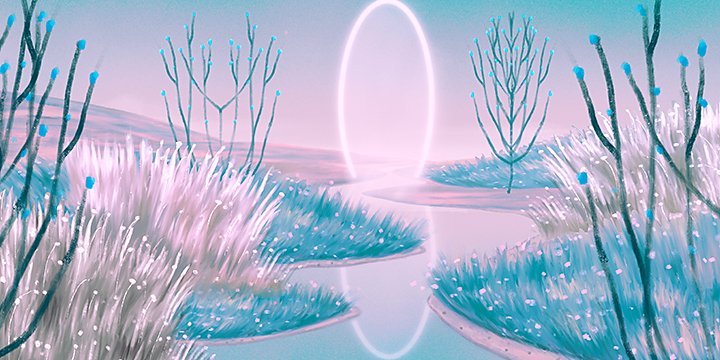


Explore environmental inspiration with Behance.
Concept art environments: FAQs.
How much does an environment concept artist make?
Concept artists can earn good money for their craft. The average concept artist salary in the UK in 2022 was around £45,000 every year. Entry level positions start at around £36,000, while concept artists with plenty of experience can make up to £65,000 every year.
What does a 3D environment artist do?
A 3D environment artist specialises in creating 3D models of indoor and outdoor settings for films, video games or TV series. They create the background visuals of fantasy worlds that the characters interact with during the game or film, such as buildings, roads and interior furnishings.
Is being a concept artist worth it?
A role as a concept artist is a creative and varied career and many find it a rewarding job with a competitive salary. On the flip-side, it can be repetitive and labour-intensive and concept artists are rarely given the recognition that comes with other roles in the film and video game industry. That said, many will certainly appreciate the incredible worlds you help to conjure.